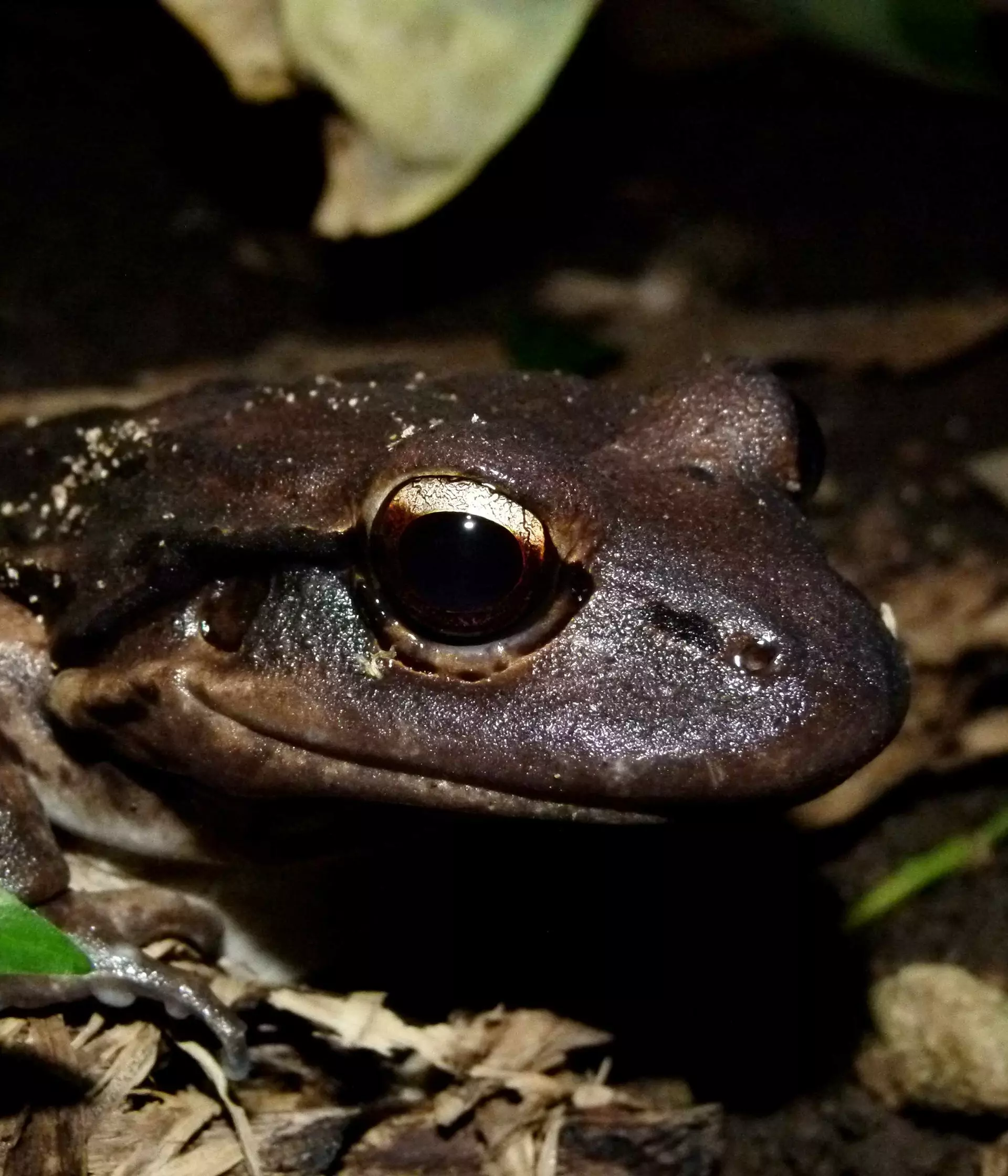Frog conservation at London Zoo
At London Zoo one focus of our conservation work is the mountain chicken (Leptodactylus fallax). Despite the misleading name, the mountain chicken is a frog named for its large size and because it was once commonly eaten in its Caribbean range habitat.
In 1996 mysterious mass deaths of frogs were discovered – by a team including ZSL scientist Professor Andrew Cunningham – to have been caused by a killer fungus – chytrid. When an amphibian is infected by the fungus, it rapidly spreads throughout the skin, causing a potentially lethal haemorrhagic disease called chytridiomycosis.
In 2002 the fungus arrived on the island of Dominica, and five years later to Monserrat – the last remaining strongholds of the mountain chicken in the Caribbean. This epidemic of Chytridiomycosis wiped out more than 90% of their population, leaving fewer than 100 on Dominica and only two on Monserrat.
Saving mountain chicken frogs from extinction
In 2009 conservationists from London Zoo and Durrell Zoo airlifted the last few frogs to safety in a last-ditch attempt to save it from extinction. We custom-built a bio secure facility for them behind the scenes here at London Zoo so we could breed them and maintain a healthy population.
We also developed a conservation breeding facility and molecular diagnostics lab in Dominica, and trained conservationists there in animal husbandry, field survey and laboratory techniques.
After a highly successful conservation breeding programme, which included breeding 76 frogs from just two females in 2012, a group of these precious frogs were prepared to return to the Caribbean.
In 2014, 51 mountain chicken frogs were released back onto Monserrat into a protected area of the islands forest. And in 2019 another 27 frogs bred at London Zoo were transferred to Monserrat as part of the reintroduction programme.
Curator of Herpetology at London Zoo, Ben Tapley, explained: “Mountain chicken frogs are one of the most endangered animals on this planet – not only are they facing threats from habitat loss, but their numbers plummeted due to the introduction of the most devastating disease known to affect amphibians worldwide.
“The rescued frogs and their offspring were kept in a bio-secure, temperature-controlled breeding unit at London Zoo, to ensure a clean bill of health before their release back to their native habitat in the Caribbean.”
Science safeguarding the future of amphibians
But we didn’t stop there. In 2016 we led a pioneering study to treat amphibians in the wild for the first time to offer some protection against chytridiomycosis. Frogs were washed for five minutes at a time in an anti-fungal bath, giving them increased protection against the disease. Our science showed the technique could buy precious time for any given amphibian population in the face of epidemic disease, allowing conservationists more time to implement other protective measures.
Our scientists and our conservation partners are now trialling the use of heated pools on Monserrat as a way of combatting the fungus. Chytrid fungi are sensitive to heat and warm water heated to around 30 degrees C kills the fungi without harming the frogs. If we can prove that the heated pools are successful in fighting off the infection, it could revolutionise approaches to conserving amphibians around the world.
Visit The Secret Life of Reptiles and Amphibians to see our breeding group of mountain chickens up close and learn more about this amazing conservation effort to save them.
As part of ZSL, we carry out wildlife conservation projects across the world.
Conservation at ZSL
Dja conservation complex
In the dense forests of the Dja conservation complex, people have been living together with wildlife for thousands of years. But the balance that has supported people and wildlife for thousands of years has now begun to shift.
Restoring mountain chicken frog populations
Creating routes to recovery through cutting-edge scientific research and breeding at London Zoo.
Developing a route for recovery for Chinese giant salamanders
Together with our partners, we completed the largest ever wildlife survey in Chinese conservation history, and discovered just 24 giant salamanders, all of which were likely escapees from farms.
